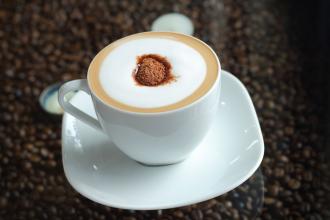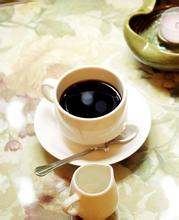Introduction to the production area of grinding scale of Peruvian coffee beans by description of taste and flavor
Introduction to the production area of grinding scale of Peruvian coffee beans by description of taste and flavor
1. Coffee roasting and frying
The taste of coffee varies depending on the type of coffee beans, the method of grinding, the degree of baking, and the quality. The type of beans is an essential problem, but the grinding method and the degree of baking are subjective human factors. Basically, coffee is made through the process of harvest selection, roasting, grinding and extraction, but the most important roasting skill is the key to the taste of coffee.
To put it simply, roasting is to stir-fry raw coffee beans, which changes other societies by heating them. in the process of baking beans, it is absolutely right to heat the coffee beans all over the body and make the beans pop up completely until the heat completely permeates the inside of the raw beans. Coffee beans fully expand so that coffee beans will emit a unique fragrance.
The coffee is roasted. Part of it evaporates, but the aromatic oil is more easily soluble in water, making the drinker feel fragrant. However, the roasting time should not be too long, and the interior of all the coffee beans should be cooked. In terms of the roasting process, there are three kinds of light, medium and strong roasting, slightly roasted coffee with a thin, sour taste, and medium roasting with just the right sour and bitter taste. At present, it is more popular to roast coffee quickly with charcoal fire, which can completely retain the aroma of coffee without losing it.
Peruvian coffee is grown in a planned way, which has greatly increased coffee production. Its rich acidity and mellow smoothness are its most prominent features. Peruvian coffee has a soft sour taste, medium texture, good taste and aroma, and is an indispensable ingredient in the production of comprehensive coffee. High-quality Peruvian coffee has a strong aroma, smooth, layered, rich and sweet, and contains elegant and mild sour taste, will quietly awaken your taste buds Peru is a huge and diverse land for them to produce a large number of different kinds of coffee beans, Peru can produce very high-quality Peruvian coffee. In general, these coffee beans have the gloss of Central America, but they are all packaged in South American flavor. High-quality organic venues do have more rural coffee characteristics. As long as these coffee beans continue to add interesting flavors rather than weaken them. Such a cup of Peruvian coffee has all the bright and deep tastes. When a cup of ordinary Peruvian coffee is in your hand, you don't have to try to taste it.
Peruvian coffee beans are best known for their coffee beans from Chimacha Mayou in the middle and Cusco in the south. In addition, some areas in northern Peru also produce characteristic organic coffee. Organic coffee is made of beans grown in the shade of trees. Although the yield of coffee beans is not high because of the method of planting in the shade, its quality can reach the level of gourmet coffee. This is because shading trees can slow down the ripening of coffee trees, help coffee grow fully, make it contain more natural ingredients, breed better flavors, and reduce caffeine content.
Peru is located in western South America, with a coastline of 2254 kilometers. The Andes runs from north to south, and the mountains account for 1% of the country's area. it belongs to the tropical desert region with a dry and mild climate. Peruvian coffee is mostly grown at the foot of the Andes, where it is rich in traditional Central American top coffee beans.

Important Notice :
前街咖啡 FrontStreet Coffee has moved to new addredd:
FrontStreet Coffee Address: 315,Donghua East Road,GuangZhou
Tel:020 38364473
- Prev

Starbucks cappuccino standard recipe taste introduction
Starbucks cappuccino standard practice taste introduction 1, personally feel that the bright times or bright three islands are more fragrant, milk concentration is just right. Especially Mishima, cheaper value. Do not use Weigang milk, it will destroy the original perfect taste of coffee. Frankly speaking, I drink coffee in Starbucks in Nanjing purely for the sake of environment. Weigang milk is very bad, creamy
- Next

Description of flavor of Starbucks Ugandan coffee beans introduction of varieties produced by grinding scale
Starbucks Uganda coffee bean flavor description grinding scale production area variety introduction Uganda coffee production is among the highest in Africa, accounting for more than 70% of its total exports, while Uganda is also the hometown and main producing area of Robbins specialty coffee. In the 1960s, Ugandan coffee production remained at 3.5 million bags a year. By the mid-1980s, mainly for political reasons, coffee production
Related
- Detailed explanation of Jadeite planting Land in Panamanian Jadeite Manor introduction to the grading system of Jadeite competitive bidding, Red bid, Green bid and Rose Summer
- Story of Coffee planting in Brenka region of Costa Rica Stonehenge Manor anaerobic heavy honey treatment of flavor mouth
- What's on the barrel of Blue Mountain Coffee beans?
- Can American coffee also pull flowers? How to use hot American style to pull out a good-looking pattern?
- Can you make a cold extract with coffee beans? What is the right proportion for cold-extracted coffee formula?
- Indonesian PWN Gold Mandrine Coffee Origin Features Flavor How to Chong? Mandolin coffee is American.
- A brief introduction to the flavor characteristics of Brazilian yellow bourbon coffee beans
- What is the effect of different water quality on the flavor of cold-extracted coffee? What kind of water is best for brewing coffee?
- Why do you think of Rose Summer whenever you mention Panamanian coffee?
- Introduction to the characteristics of authentic blue mountain coffee bean producing areas? What is the CIB Coffee Authority in Jamaica?

